Do you have a question about the Suzuki 2004 VL800 and is the answer not in the manual?
Explains the meaning and usage of WARNING, CAUTION, and NOTE signal words in the manual.
Emphasizes defensive riding, visibility, and awareness of other drivers to avoid accidents.
Stresses the importance of wearing a helmet and eye protection for safety.
Explains proper braking techniques, emphasizing the use of both front and rear brakes.
Recommends practicing safety techniques through rider training courses like MSF.
Advises riders to stay within their skill limits to avoid accidents.
Highlights mental and physical readiness, avoiding alcohol/drugs, and riding cautiously.
Provides advice for riding in adverse weather conditions like rain, emphasizing caution.
Offers guidance on safely carrying a passenger, including adjustments and precautions.
Encourages riders to obey laws, speed limits, and maintain a courteous attitude.
Details the type of unleaded gasoline and octane rating required for the motorcycle.
Explains the use of oxygenated fuels, MTBE, ethanol, and methanol blends, and their limitations.
Recommends specific SUZUKI PERFORMANCE MOTOR OIL or equivalent, and viscosity grades.
Specifies the use of SAE90 hypoid gear oil (GL-5) or SAE80 for cold temperatures.
Details the 50:50 mixture of engine coolant and distilled water for the cooling system.
Advises to read and understand all safety labels on the motorcycle and not to remove them.
Warns about risks of injury if safety precautions and manual instructions are not followed.
Stresses the importance of reading the manual for safety and operational instructions.
Identifies key components located on the left and right handlebars and the front of the motorcycle.
Identifies various parts of the motorcycle, including levers, stands, and holders.
Identifies additional components such as air cleaner, ignition switch, and brake pedal.
Explains key usage and ignition switch positions (OFF, ON, LOCK).
Details the parking position of the ignition switch and how to lock the steering.
Describes speedometer, odometer, trip meters, and fuel meter functions.
Provides steps to set the 12-hour clock display on the instrument panel.
Explains odometer/trip meter functions and the turn signal indicator light.
Covers neutral, oil pressure, high beam, and coolant temperature indicators.
Details clutch, headlight, turn signals, and horn controls.
Describes engine stop switch and front brake lever, including adjustment.
Explains hazard lights, starter button, and throttle grip operation.
Instructions for opening/closing fuel cap, with overfilling warnings.
Explains choke usage for starting and the 5-speed gearshift operation.
Details rear brake pedal operation and how to use the helmet holder.
Explains side stand operation and its interlock system.
Guides on adjusting rear suspension spring pre-load for different conditions.
Emphasizes the critical nature of the first 800 km for motorcycle longevity and performance.
Provides a table with recommended maximum throttle openings during the break-in period.
Advises varying engine speed during break-in to aid component mating and cooling.
Guides on breaking in new tires by gradually increasing lean angles and avoiding harsh maneuvers.
Highlights the importance of the initial 1000 km service for adjustments and fastener tightening.
Stresses the critical need for pre-ride inspections to prevent accidents and equipment damage.
Instructs to always perform a thorough pre-ride inspection before operating the motorcycle.
Lists essential items to check before riding for safety and reliability.
Warns about the dangers of worn, improperly inflated, or incorrect tires affecting stability.
Provides detailed steps for starting the engine, including cold and warm conditions and interlock checks.
Offers advice for starting a warm engine and troubleshooting a hard-to-start engine.
Guides on safely starting from a stop and shifting through gears while riding.
Explains how to use the transmission for smooth operation and provides shifting speed guidelines.
Advises on shifting gears for climbing and descending hills to maintain power and control.
Details the correct procedure for stopping the motorcycle and selecting neutral.
Provides instructions for carrying a passenger, including adjustments and passenger behavior.
Warns against unsuitable accessories and advises consulting dealers for selection and installation.
Provides guidelines for installing accessories, focusing on aerodynamics, mounting, and clearance.
Offers advice on balancing loads, placement, and securing items to maintain motorcycle control.
Specifies the combined weight limits for rider, passenger, gear, and cargo to ensure safe operation.
Warns that modifying the motorcycle or removing original parts can make it unsafe or illegal.
States that emission control device maintenance can be performed by certified repair establishments.
Emphasizes the importance of regular inspection and maintenance according to the schedule.
Provides a chart detailing inspection, replacement, and tightening intervals for various motorcycle elements.
Mentions that a tool kit is provided and its location in the toolbox.
Explains that proper lubrication is vital for safe operation and longevity, increasing frequency in severe conditions.
Illustrates and labels key points requiring lubrication with oil or grease.
Describes the sealed battery type and its standard/maximum charging rates.
Warns about lead content, lead compounds, and explosive hydrogen gas produced by batteries.
Provides step-by-step instructions for safely removing the motorcycle battery.
Stresses keeping the air cleaner element clean for engine power and fuel economy, especially in dusty conditions.
Details the steps for removing the air cleaner element for inspection and cleaning.
Explains the location and periodic maintenance for the air cleaner drain plug.
Lists the standard spark plug types and advises consulting a dealer if the insulator color is incorrect.
Provides instructions for cleaning carbon deposits and adjusting the spark plug gap for optimal ignition.
Guides on safely installing new or used spark plugs, warning against crossthreading or overtightening.
Highlights that engine oil amount and quality are critical for daily checks and periodic changes.
Details the steps to check the engine oil level using the inspection window.
Provides a step-by-step guide for changing the engine oil and oil filter, including draining and refilling.
Explains idle speed adjustment and throttle cable play adjustments for the carburetor.
Advises inspecting the fuel hose for damage and leakage, and replacing if defects are found.
Details minor and major adjustment procedures for clutch cable play to ensure proper operation.
Explains how to check the engine coolant level in the reservoir and add coolant if needed.
Provides steps for changing the final gear oil, including draining and refilling with the correct type.
Introduces the motorcycle's braking system, consisting of front disc and rear drum brakes.
Stresses the importance of inspecting and maintaining brakes to prevent accidents.
Details how to check the front brake fluid level and the type of fluid to use, with safety warnings.
Guides on inspecting front brake pad wear and the procedure for replacing worn pads.
Explains how to adjust the rear brake pedal position and free travel for proper operation.
Describes how to check the brake lining wear limit indicator on the rear brake.
Warns about potential accidents due to tire failure and emphasizes critical tire maintenance.
Provides guidelines for checking tire pressure and loading limits to ensure safe motorcycle control.
Advises on checking tire condition, wear limits, and using the specified tire size and type.
Explains how to adjust the rear brake light switch for proper operation.
Lists the wattage ratings for various motorcycle bulbs and advises using the same rating for replacement.
Provides instructions for removing and replacing the headlight bulb, including cautions about handling.
Details the procedure for removing and replacing the turn signal light bulb.
Explains how to remove and replace the brake light and taillight bulbs.
Indicates that the main fuse is located under the front seat and describes how to access it.
Explains the location of fuses behind the left crankcase cover and lists spare fuse ratings.
Lists the amperage and function of each fuse in the electrical system.
Introduces the troubleshooting section for common motorcycle complaints.
Addresses issues where the engine is hard to start or won't start at all, pointing to fuel or ignition systems.
Provides steps to check the fuel tank, fuel valve, and carburetor for starting issues.
Details how to perform a spark test to diagnose ignition system problems.
Lists possible causes for engine stalling, including fuel, spark plug, and idle speed issues.
Advises on cleaning the entire motorcycle before storing it for an extended period.
Guides on filling the fuel tank with stabilized gasoline and draining the carburetor for long-term storage.
Explains how to prepare the engine by adding oil to spark plug holes and draining old oil.
Details the steps for removing and storing the battery to maintain its condition.
Advises inflating tires to normal specifications before storage.
Outlines the steps to take the motorcycle out of storage and prepare it for riding.
Provides information on causes of corrosion and methods to prevent it, like frequent washing and drying.
Details the steps for washing the motorcycle, including removing dirt and using mild detergent.
Recommends waxing the motorcycle after washing to protect and beautify the paint.
Advises performing inspections after cleaning and lubricating according to the general lubrication section.
Explains the emission control warranty coverage, useful life, and conditions.
Outlines federal laws prohibiting tampering with noise control systems on vehicles.
Shows where to find the frame and engine serial numbers, essential for registration and parts ordering.
Instructs owners on how to report potential safety defects to NHTSA and American Suzuki.
Lists the physical dimensions and dry mass of the motorcycle.
Details engine type, bore, stroke, displacement, compression ratio, and carburetor.
Provides specifications for the clutch, transmission, gear ratios, and drive system.
Lists specifications for front and rear suspension, steering angle, caster, trail, and brakes.
Details ignition type, battery, generator, fuses, and bulb specifications.
Lists the capacities for fuel tank, engine oil, final gear oil, and engine coolant.
| Manufacturer | Suzuki |
|---|---|
| Model | VL800 |
| Year | 2004 |
| Displacement | 805 cc |
| Bore x Stroke | 83.0 mm x 74.4 mm |
| Compression Ratio | 9.4:1 |
| Ignition | Electronic ignition (transistorized) |
| Transmission | 5-speed constant mesh |
| Final Drive | Shaft drive |
| Front Suspension | Telescopic, coil spring, oil damped |
| Front Brakes | Single disc brake |
| Rear Brakes | Drum brake |
| Front Tire | 130/90-16 |
| Rear Tire | 170/80-15 |
| Seat Height | 700 mm (27.6 in) |
| Ground Clearance | 140 mm (5.5 in) |
| Engine Type | 4-stroke, liquid-cooled, 45° V-twin |
| Rear Suspension | oil damped |
| Overall Width | 985 mm |
| Wheelbase | 1, 655 mm |
| Curb Weight | 246 kg |
| Category | Cruiser |
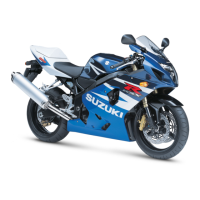
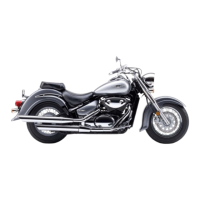

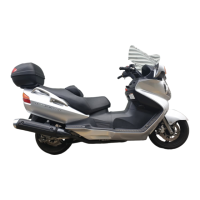

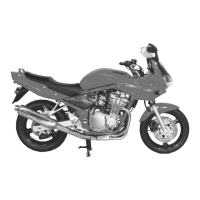
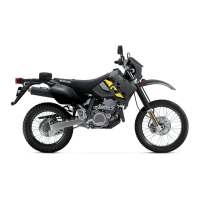
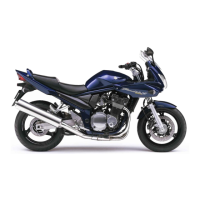
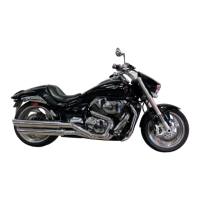
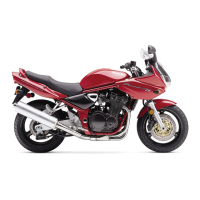
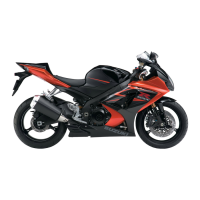
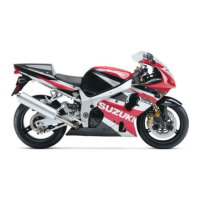
